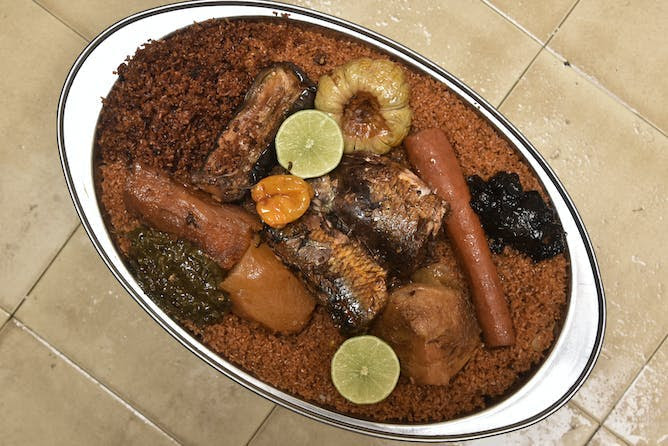Avocado in Focus-Part 1
By: Mohammed Abu
Generally, mankind takes seeds of the diverse fruits eaten for granted and are thrown away as thrush after enjoying fruit pulps.
Rather than treating seeds of fruits as components of waste and the pile up of which sometimes become environmental burdens, the philosophy of the emerging circular economy is that, all waste must rather be treated as raw materials.
Rather than being regarded as a nuisance, they could be turned into a blessing for the creation of additional industries in other to generate employment and wealth. Resource use efficiency is the major objective of the circular economy concept or otherwise put as circularity.
Seeds of some fruits could either be turned into teas, soup thickeners, food supplements, cooking oils and could be as well be used for the production of medicines for various ailments, beauty care products among others.
Avocado is one of the common fruits, the seeds of which plus the outer covers are generally wasted when they could be processed into additional foods and other goodies for human consumption.
Avocado Seed Benefits: What Researchers Say
Indeed, a lot of write-ups are available on the internet on avocado seed value but what is more authoritative and conclusive is a research article, titled,” A Review on Avocado Seed: Functionality, Composition, Antioxidant and Antimicrobial Properties” published in the Chemical Science International Journal- July 2019 DOI: 10.9734/CSJI/2019/v27i230112
The article is co-authored by, Tassew Belete Bahru1*, Zinabwa Hailu Tadele1 and Eyasu Gebrie Ajebe1 1 Department of Chemistry, College of Natural and Computational Science, Wolkite University, Ethiopia.
This work was carried out in collaboration among all authors. Author TBB designed the study, performed the statistical analysis, wrote the protocol and wrote the first draft of the manuscript. Author ZHT managed the analyses and edited sessions of the study. All authors read and approved the final manuscript.
See discussions, stats, and author profiles for this publication at: https://www.researchgate.net/publication/334653995
Abstract
The seed of avocado is considered as one of the non-edible part of the fruit, which are usually discarded as residues and can cause ecological problems. Exploring the possible dietary and therapeutic potentials of especially such underutilized wastes will in addition reduce the possible environmental waste burden.
The objectives of this review article is to alert the functionality, chemical composition, antioxidant and antimicrobial properties of avocado seed for its use as food and justification for its medicinal use.
The composition like proximate (protein, fat, ash, moisture, fiber and carbohydreate), minerals (Ca, Zn, K, Na, P, Fe, Cu, Pb and Co), phytochemicals (Flavinoid, Tanine, Saponine, Total phenolics, Antioxidnt capacity, Oxalates, Phytates, Alkaloids) and Vitamins (A, B1, B2, B3, C and E) were reported to be present in the avocado seed in different proportions.
Some poisonous phytochemicals are present in fresh seeds of avocado and not in the dry seeds, hence recommended to dry the seeds before processing for consumption. Its biological activities such as antioxidant, antihypertensive, fungicidal, larvicidal, hypolipidemic, amoebicidal and giardicidal activities had been reported.
Therefore, it can be concluded that, the avocado seed is nutritionally valuable as the other parts of the plant based on the phytochemical and nutrients it constitutes. The consumption of avocado seed is recommendable since it has high nutritional contents that make it enough for possible dietary and ethno-medicinal use.
Conclusion
“There were different studies to investigate the benefits of avocado seed as sources of food supplements or medicinal products. As reviewed from different literatures, the avocado seed is not only important for nutritional value, but also applicable for different medicinal purposes. Researchers investigates the nutritional composition: proximate, minerals and antioxidant and antimicrobial properties of the avocado seed.
“Most of them reported that, it possesses nutritional qualities that may be further investigated for application in food industry rather than constituting waste or nuisance to the environment. Its biological activities such as antioxidant, antihypertensive, fungicidal, larvicidal, hypolipidemic, and recently amoebicidal and giardicidal activities had reported.
“Therefore, it can be concluded that, the avocado seed is nutritionally valuable as the other parts of the plant based on the phytochemical and nutrients it constitutes. The consumption of avocado seed is recommendable since it has high nutritional contents that make it enough for possible dietary and ethno-medicinal”
Our scientific researchers have spoken and it is indeed a wake-up call. On this note, your favourite, the Ecoenvironews Africa magazine, under “The Seeds We Throw Away” series would be featuring how avocado seed and various other seeds can be turned into tea, edible oils, paste for use as food supplements, ethnobotanical medicines for hypertension, diabetes and many others. Do make it a point to visit us regularly so you don’t miss out on anything.


